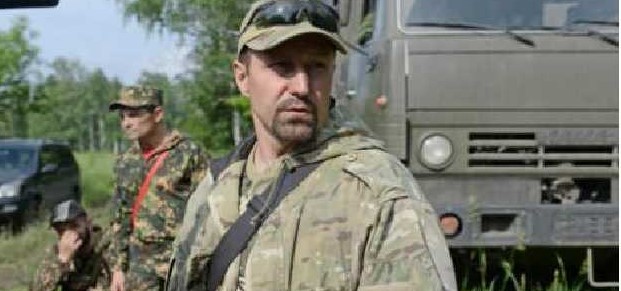Russian-backed Donbas militant admits to bombing Ukrainian city

Alexander Khodakovsky, one of the militant commanders of the self-proclaimed ‘Donetsk people’s republic’ has admitted to bombing the city of Yasynovata in August 2014 which was fully taken over in late August 2014. He claims that he “was forced” to do so in order to force out the Ukrainian Army and also asserts, with zero credibility, that no civilians were killed. Both Russian and Russian-backed militants have repeatedly denied ever bombing cities and residential areas, with both the militants and Russian state-controlled propaganda media invariably claiming that Ukrainian forces were carrying out such bombings. This was a major part of Russian disinformation in 2014, with it including a sickening propaganda film produced by the state-funded Russia Today [or RT] and shown in English-speaking countries before being swiftly deleted (details here).
The rest of Khodakovsky’s VKontakte post is interesting only for what he chooses not to write. While the Ukrainian former-SBU Alpha special forces officer continues the standard narrative about the conflict being a ‘civil war’, he makes no mention of how the militants came to be in a position to defeat the Ukrainian army, which was, until the middle of August, believed by Ukrainian and western observers to be on the point of regaining control of all of Donbas. Khodakovsky’s bombing of civilians and seizure of Yasynovata in the last week of August 2014 was made possible both by Russian-provided missiles, and by the large contingents of Russian military men deployed in Ukraine during the second half of August.
Russia’s military engagement has been effectively confirmed by one of the Russian militant leaders of ‘DPR’, Alexander Borodai. He recently said that all surviving militants “are beholden to the President of the Russian Federation, Vladimir Putin. .. If not for his decisions and actions, we would not be here. In the same way as that there would not be Russian Donbas, and the Donetsk and Luhansk people’s republics”.
While Borodai stopped short of mentioning Russian military forces, it cannot really be said that the military equipment and the vast numbers of military trucks with men heading towards the Russian-Ukrainian border in the second half of August were concealed, certainly not from journalists willing to use their eyes and cameras, rather than simply report that Kyiv asserts one thing, and Moscow another. The video footage taken by the Polish TVN24 on 18 August 2014 makes the scale of Russia’s engagement abundantly clear.
Khodakovsky is not the first militant to have admitted to bombing civilians. On 25 January 2016, the then ‘DPR leader’, Alexander Zakharchenko openly spoke of how his fighters had razed the Ukrainian village of Kozhevnya to the ground in 2014. He called it their first offensive, while saying that “unfortunately, in the course of fighting we practically destroyed this village”. Here too, of course, he tried to focus on destruction of buildings, claiming that in the process they had “saved our lives and the lives of our people”.
The wish by people like Khodakovsky and others to reminisce about the good old killing times is providing a considerable amount of incriminating testimony. One Russian neo-Nazi fighter, who openly called for the destruction of Ukraine, has even written a usefully incriminating account of his involvement in the Russian unit led by ‘former’ Russian military intelligence officer Igor Girkin in the seizure of Sloviansk.
Sloviansk and Kramatorsk were liberated in July 2014, during the period where the Ukrainian army was clearly pushing back the militants. In complaining that the help came too late, Zhuchkovsky acknowledges Russia’s military engagement.
“Russia nonetheless had to bring in forces, albeit unofficially. Had Moscow done that at the end of June or beginning of July, Sloviansk would still be under a Russian flag <> Without Russian support, the militants would not have held out until autumn. The long-awaited help arrived only in the middle of August.”.
In a study entitled Russian Forces in Ukraine and published in March 2015 by the UK-based RUSI [the Royal United Services Institute for Defence and Security Studies], Igor Sutyagin estimated that there were at least 10,500 – 11,000 Russian troops operating in eastern Ukraine by March 2015.
Sutyagin dates the beginning of the engagement as at the middle of August 2014. This coincides with the first reports of Russian military casualties in Russian independent media (see: If Russia is not at war, then who is in those freshly-dug graves? and Entire Pskov paratrooper regiment killed in Ukraine? ).
Russia has since classified any information about military losses in peacetime as a state secret; has banned any soldiers from using social media; and has used a variety of other measures, from bribery to threats, to prevent the families of soldiers killed, from talking about this (details here).
There are also a suspiciously large number of militants who have died violently or in very strange circumstances. While the militants invariably try to blame Kyiv for the deaths, Ukraine has reason to capture such people, none to kill them. It is not Ukraine who would have reason to fear their testimony before the International Criminal Court at the Hague.





